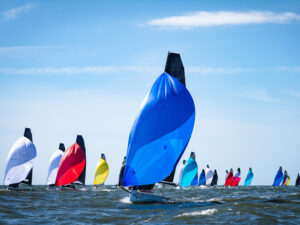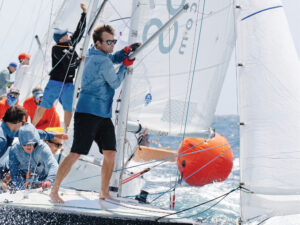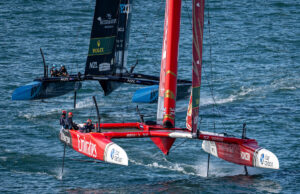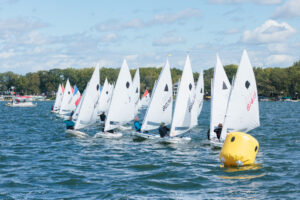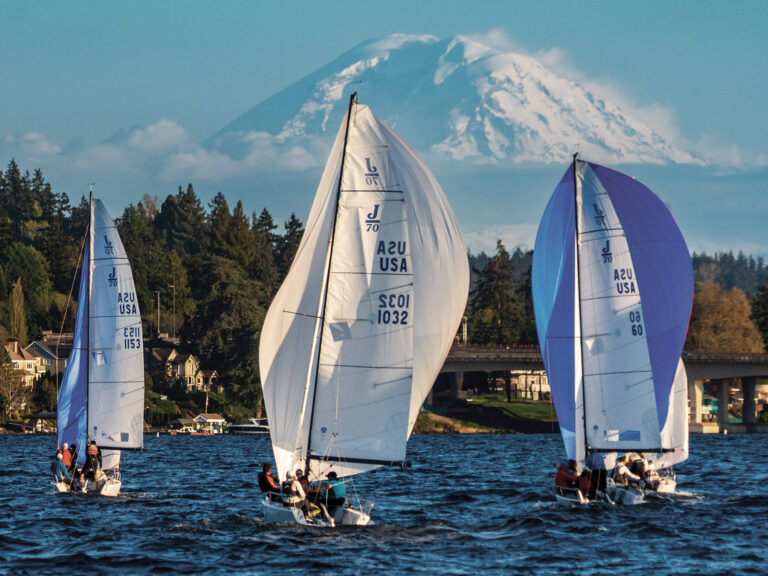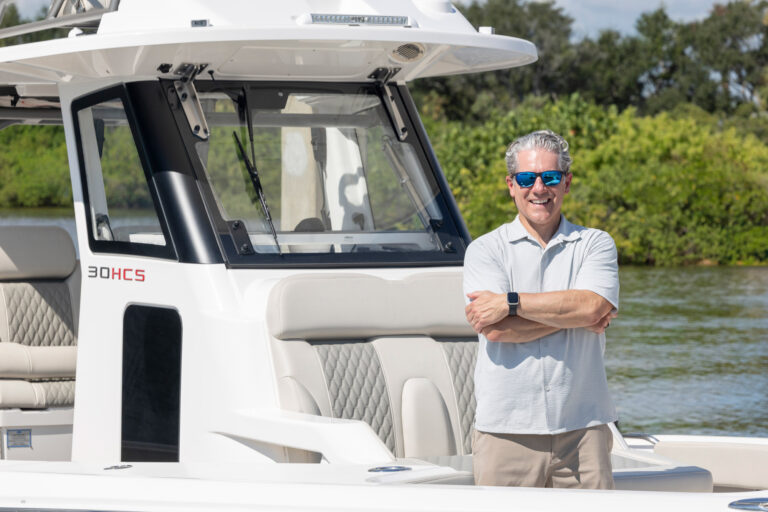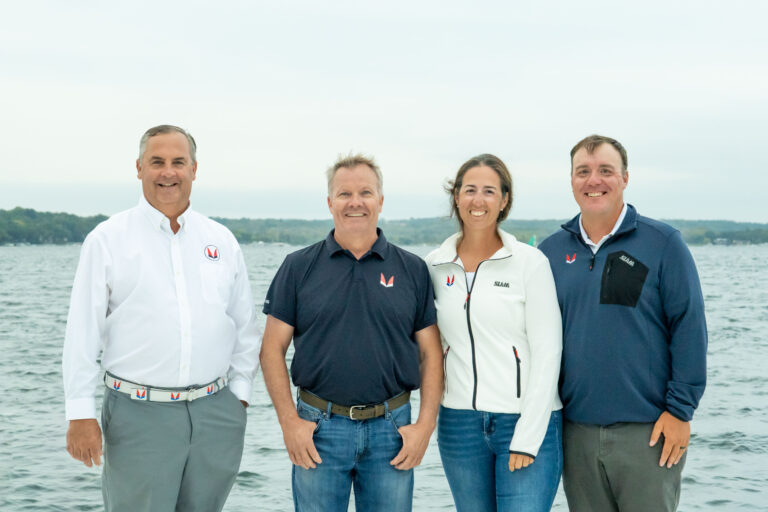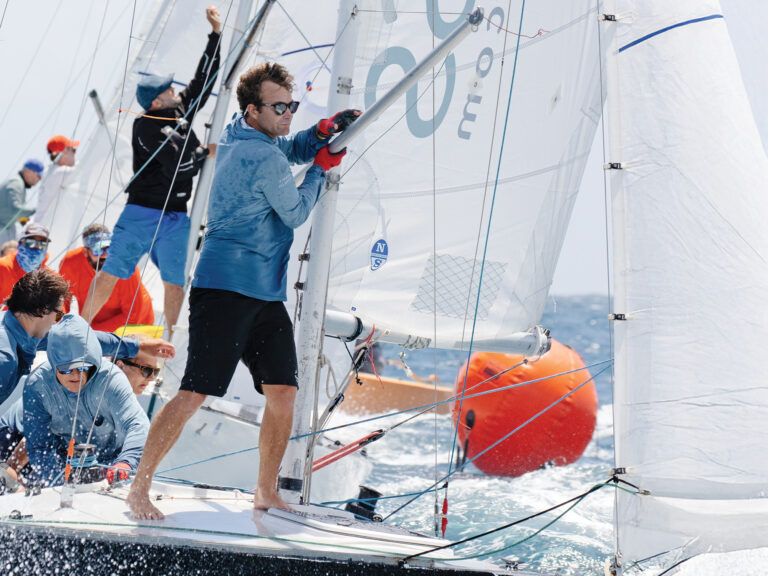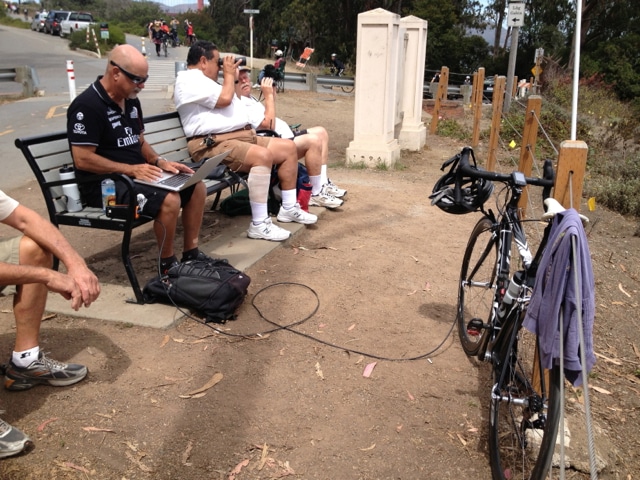
Dee Smith
The text from Dee Smith reads, “The place I watch is at the top of Crissy Field. Park bench. Will be there before noon.” I text back for specifics because Crissy Field is a big place. Smith replies with a text, ”Dropped pin near San Francisco Bicycle Route 2, Golden Gate National Recreation Area, San Francisco, CA 94129,” and a link to a Google map.
Clandestine.
I find Smith on his perch with a bird’s eye view of the top end of the AC34 racecourse. He’s conspicuously clad in all-black Emirates Team New Zealand gear, clipless cycling shoes still on. His black Cervélo road bike leans against a wire fence in front of him. Attached to the bike is an antenna, and his laptop is powered up. He’s talking by radio to Roger “Clouds” Badham, ETNZ’s weather guy who is set up in a building that looks out over the middle and bottom end of the course, and tactician Rod Davies, who is aboard the Kiwi boat for Race 1 of the Louis Vuitton Finals against Luna Rossa.
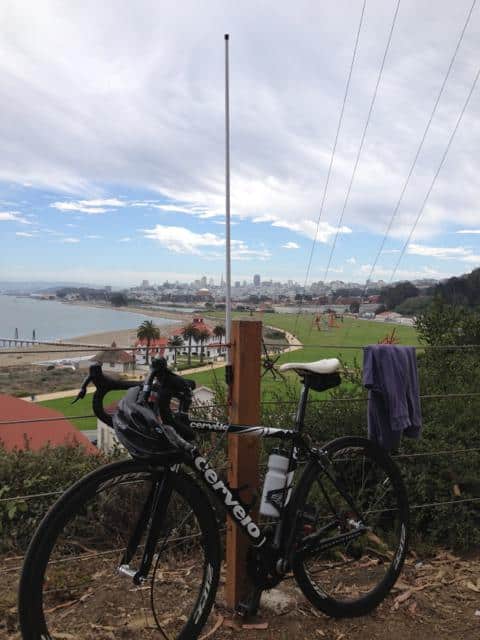
Smith’s Crissy Field perch
Smith’s been with the Kiwis for about a year, providing local knowledge info. Today he’s helping Clouds and Davies assess the situation prior to the race start, to determine which jib they’ll put on board. We watch ETNZ and Luna Rossa warm up. “Look how much faster they’re going [ETNZ]; they’re going really well,” Smith says. A few minutes later, we see Oracle start a practice race. One boat makes a jibe and Smith quips, “Oop, look at that, they still don’t know how to jibe on Oracle. That’s a big gain. That’s where we think we have our biggest advantage.”
What are you doing perched out here?
DS: What I am doing is just what you see—weather opps—I’m putting my tactical stuff with the weather stuff and relaying to Ray on a one-on-one basis, understanding what he wants. Clouds understands it, too, but I just have that local tactician knowledge. If I had eyes out here every time I sailed, it would make it a lot easier, especially if it’s your own eyes.
Specifically, what are you doing for ETNZ?
DS: In the beginning I was the local knowledge teacher, and that was to get Ray, Dean and everyone on the team up to snuff with everything I know from 40 years of sailing here. That part of the job is really over because they’re smart boys. They can figure it out; they’ve been here long enough. They’ve now asked me to come in and observe the west end because Clouds can see the east end of the course. We go through this same banter back and forth, what I see and feel and what he knows with the models.
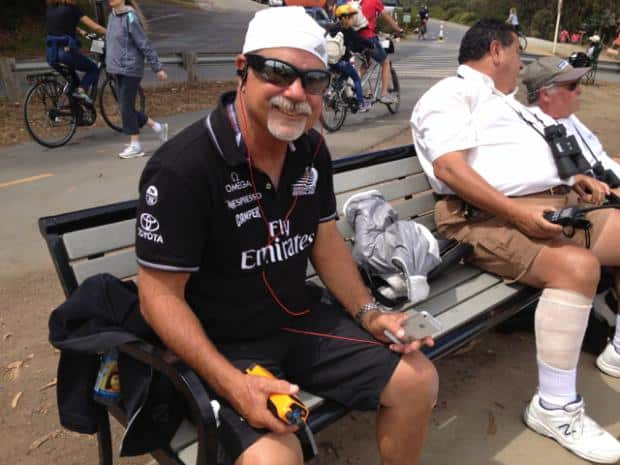
How does the info you feed back supplement what the weather models give them?**
DS:** I don’t try to give them the information and say, “You gotta do this, or you gotta do that,” because in the time lag, when he can’t get the information after the five minutes, it changes. What Clouds and I both do is we try to tell them what we see, what we think are the things to watch out for, and try to predict the future the best we can. Of course we can never be wrong because we’re not making the call. We want to him [Ray Davies] to have the information to make the call with confidence, whatever it is.
**It’s super light out here today****—unusual for this time of year?
DS: **I don’t think conditions can get much lighter than this—the main thing is we have a strange weather pattern. We don’t just have this established high out there pumping in northwesterlies every day. But the boats are so powerful they can sail in anything. Today we’re wondering if we want to put a code zero on the boat today or not because in 10 knots of wind it’ll be a lot faster downwind.
You know the guys at ETNZ well****—what’s working for them?
DS: They’re an incredibly well-run team. Everybody’s on the same page, there are no politics, everything is discussed in a way that would result in the best decision. Ideas flow through all channels, and everybody thinks about them—it’s just easy and refreshing. It’s a bit of a management style from Dalts. I went around the world with him—12 years ago—he’ll squish the politics if necessary. He just doesn’t deal with it. It’s his team, his style of management and direction. He finds really smart people and gives them the responsibility and authority to do their job well. In this big of a team it’s hard to do—like we’ve seen in another team here who hasn’t done so well. Dean is more of a pilot than a sailor. He’s a boatspeed guy—he’s taken it on and he’s got it. It’s impressive. They didn’t know what they were doing in the World Series events only because they were so busy focusing on their 72.
**
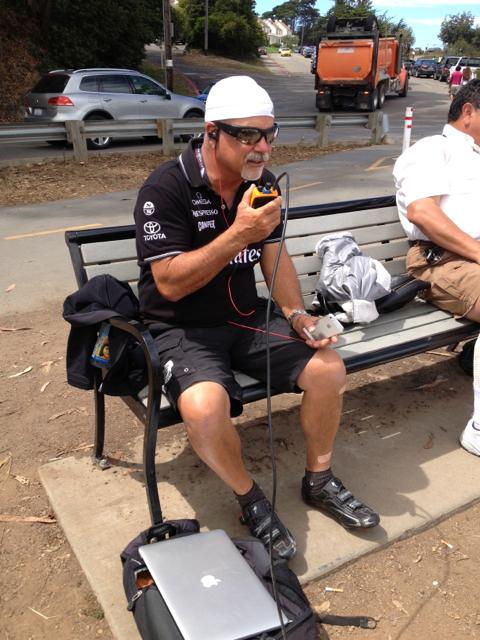
Their foiling jibe is definitely working for them, right?
DS: **They’ve been doing it a lot … they drop in, their timing is perfect, the turn is even, everybody gets there, and they’re off. It’s not hard for them, but it’s because of the countless hours of doing it, and they have more hours than everybody else. It’s got to be a huge advantage. It’s really important.
What are your thoughts on ETNZ versus Oracle performance at this stage?
DS: I hope it’s going to be an exciting match, but I don’t have any real information on Oracle. What I can say is, that while I was gone on the Transpac, our boys made a significant jump, and I think they should feel pretty good. ETNZ has never wanted to line up against Oracle; they’ve always stopped anytime they’ve been on the course close to Oracle. Oracle has wanted to line up with us a few times, but we just stopped as we don’t want to give Oracle anything. But now Oracle has all our information from the races, but we don’t have anything from them. But today we may have got some off the racecourse …
You’ve been out on the 72****—your thoughts?
DS: Amazing, I was just sitting there going, “Wow,” then you watch the guys sailing it. It’s not easy, but it’s not hard—they know what they are doing. Very impressive—it’s more like being a fighter pilot than a helmsman, as far as what you have to think about and do. We’re sailing in three dimensions now, it’s not two anymore. It’s so much smoother than the 45. You’re talking about speed, we’re supposed race boats—we’re finally racing something that isn’t the slowest means of transportation known to mankind for the first time [laughs].
Suddenly a cold breeze comes from behind, Smith immediately picks up on it and radios to Clouds, “Just got a cold puff over my shoulder from the right, over.” Clouds: “Yeah, the slightly more right has filled down, it’s not quite at the bottom yet, but the best pressure is still out in the middle.”
Race on.

